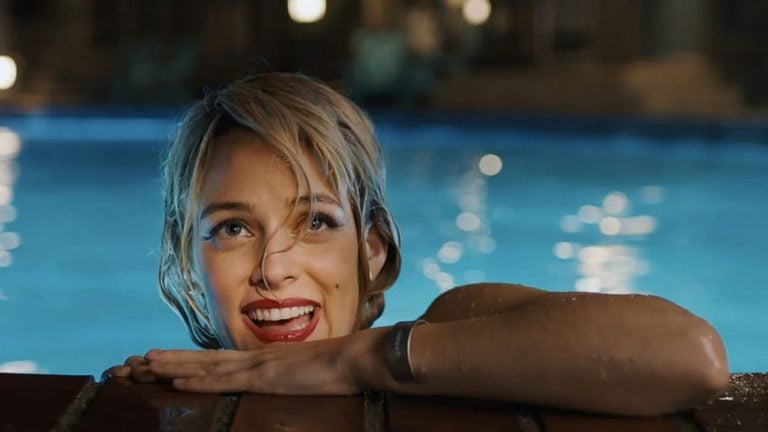The post-mainstream success film tends to be a challenge for directors, especially in Hollywood. Riding on the wave of public and/or critical recognition from a previous movie, filmmakers often get more funding and freedom to realise their vision fully for their follow-up project.
But the constraints of a limited budget and the ambition to make oneself noticed are powerful driving forces that can make a first film more interesting and effective than its anticipated and emancipated follow-up. David Robert Mitchell’s Under The Silver Lake is exactly one such blank check, but it also reveals in sharper contrast the key motifs that the director hinted at in his widely acclaimed sophomore flick It Follows. Those idiosyncrasies, it turns out, are dispiriting: what follows goes nowhere, as Mitchell exhibits his disdain for meaning, knowledge and human beings (especially women) over more than two hours of faux postmodern intellectualism.
Watch the Under The Silver Lake trailer here:
What better location than Los Angeles to explore the pointlessness of existence, and what better suited protagonist than a 30-something white man to add on top of it a self-righteous digging into other people’s lives, barely disguised as a deep-dive into modern life and its discontents? As Sam (whose looked-for job remains undetermined), Andrew Garfield is lanky, constantly stoned, but still cute enough to get around town fairly easily.
He’s also slightly creepy, and becomes quietly obsessed with his new neighbour, the mysterious Sarah, played with charm but excessive manic-pixiness by Riley Keough – although the script is definitely to blame here. Sam sleeps regularly with his actor friend The Actress (she doesn’t have a name), but becomes worried when Sarah suddenly vanishes.
David Robert Mitchell’s Under The Silver Lake is exactly one such blank check.
Perhaps he has finally found something beyond basic sexual instincts to motivate him through life? Or maybe that’s all it is again. Nevertheless, Sam embarks on an adventure to try and find this girl he almost got to sleep with. Luckily for him – and depressingly for us – he also gets to sleep with a few other women in the process.
Mitchell’s script is dense with events and characters more or less or not at all related to Sarah. Far from creating a sense of a lived-in environment, however, this multitude of narrative arcs, twists and turns and dead-ends makes for a tiresome amalgamation of stuff. Modern life is rubbish, and there’s a lot of it: conspiracy theories, rich people controlling everything, pop culture full of secret meanings, or technological advancements deadening our souls… Sam drifts through it all with bewilderment but purpose, the one person who cares in the multitude of blasé soldiers of modernity.
Watch an exclusive clip from Under The Silver Lake here:
Despite the mess, Sam’s efforts are rewarded and he does get to the truth, which might be Mitchell’s most disingenuous touch. Whereas Paul Thomas Anderson found a kind of wisdom and humility in the random and meaningless connections of his narrative in Inherent Vice, Mitchell only validates all his fears in Under The Silver Lake.
Mitchell turns Sam into a hero who finds meaning in accidents, like a prophet whose despicable behaviour is in fact suited to his environment. Sam was right to investigate into the life of this woman he barely knew; he was right to connect these disparate dots; he was the one person who understood it all.
The whole world was made for his particular taste, and his favourite things: sexy women, comic books, old video games, and Kurt Cobain. The universe is Sam’s very own Ready Player One, and he wins at the end. Even if it’s too late for Sarah to change her mind and finally sleep with him, Sam does get the girl at the end – in the sense that he proves her wrong.
Under The Silver Lake was reviewed as part of Cannes 2018. The Australian distribution schedule of Under The Silver Lake is TBA. For more film reviews, read our take on A Quiet Place here.

































